
Browse an alphabetical list of photographs. These historical images portray people, places, and events before, during, and after World War II and the Holocaust.
<< Previous | Displaying results 1301-1325 of 2641 for "Photo" | Next >>
Janusz Korczak (center) and Sabina Lejzerowicz (to his right) pose with children and younger staff in Korczak's orphanage in Warsaw, circa 1930-1939. Even as they were deported to their deaths at Treblinka in 1942, Korczak and his staff stayed by their children.
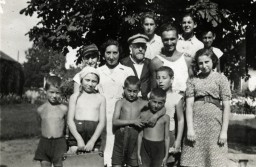
American residents of Japanese ancestry wait with their luggage for transportation during relocation, San Francisco, California, April 6, 1942.
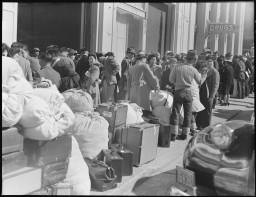
Japanese Americans wait in line to register with the War Relocation Authority, San Francisco, California, April 1942. A government agency, the War Relocation Authority was tasked with removing “enemy aliens” from designated zones. Local authorities on the West Coast forced all “persons of Japanese ancestry” to register. They were then deported, first to temporary “assembly centers” and from there to relocation centers.
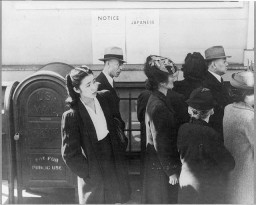
Franz Kusserow, a Jehovah's Witness, was imprisoned for nine years for his religious beliefs. Bad Lippspringe, Germany, ca. 1950.

Helene Gotthold, a Jehovah's Witness, was beheaded for her religious beliefs on December 8, 1944, in Berlin. She is pictured with her children. Germany, June 25, 1936.

Hilda Kusserow, a Jehovah's Witness, was imprisoned for nine years for her religious beliefs. Eschborn, Germany, ca. 1979.
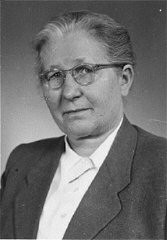
Karl-Heinz Kusserow, a Jehovah's witness who was imprisoned by the Nazis because of his beliefs. He was a prisoner in the Dachau and Sachsenhausen concentration camps in Germany.
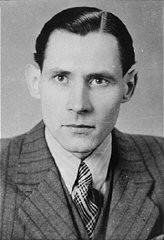
Waltraud Kusserow, a Jehovah's Witness, was arrested several times for refusing to make the "Heil Hitler" salute. She spent two and a half years in prison. Germany, after 1945.
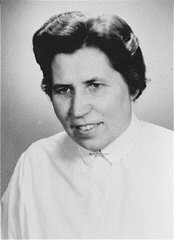
Wilhelm Kusserow, a German Jehovah's Witness who was shot by the Nazis. Germany, ca. 1940.
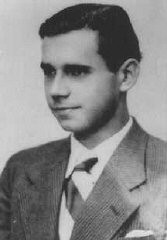
Jehuda “Lolek” Lubinski (seen here in the 4th row, 2nd from left). During his time in the Lodz ghetto, Lolek kept a diary in which he described events of the day as well as his hopes and despairs.
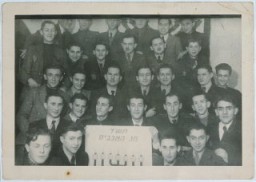
American Olympic runner Jesse Owens and other Olympic athletes compete in the twelfth heat of the first trial of the 100m dash. Berlin, Germany, August 3, 1936.
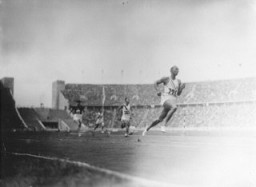
Jewish athletes at a sports festival in Grunewald stadium, Berlin. After Adolf Hitler took power, Jews were not allowed to be members of German athletic clubs. Berlin, Germany, 1934.
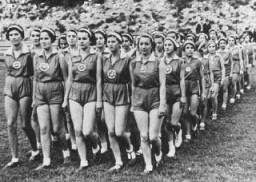
Brigadier Ernest Frank Benjamin, commanding officer of the Jewish Brigade, inspects the Second Battalion. Palestine, October 1944. The Jewish Brigade Group of the British army, which fought under the Zionist flag, was formally established in September 1944. It included more than 5,000 Jewish volunteers from Palestine organized into three infantry battalions and several supporting units.
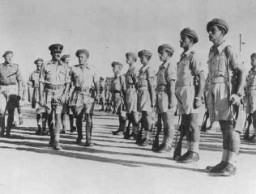
Jewish children gathered for a sporting event in a summer camp organized by the Reich Union of Jewish Frontline Soldiers. Germany, between 1934 and 1936.

A transport of 200 Jewish children, fleeing postwar antisemitic violence in Poland, arrives at the Prague railroad station. The children are on their way to displaced persons camps in the American-occupied zone of Germany. Prague, Czechoslovakia, July 15, 1946.
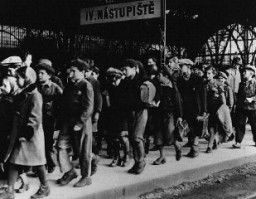
These Jewish children from the Children's Aid Society (OSE) home in Izieu were arrested and deported on the orders of Lyon Gestapo chief Klaus Barbie—the "Butcher of Lyon." France, 1944.
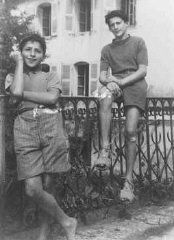
After the war, thousands of Jewish children ended up in orphanages all over Europe as a result of the Holocaust. The toddlers in this children's home in Etterbeek, Belgium, survived in hiding, but their parents had been deported to Auschwitz.
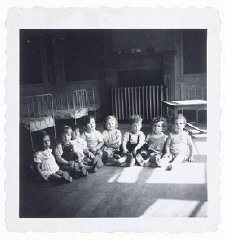
Jewish children in an orphanage operated by the Jewish council of the Vilna ghetto. Vilna, 1942.
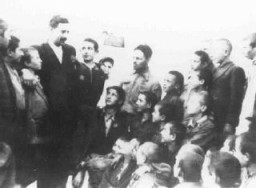
A photograph of Jewish children in the Theresienstadt ghetto taken during an inspection by the International Red Cross. Prior to this visit, the ghetto was "beautified" in order to deceive the visitors. Czechoslovakia, June 23, 1944.
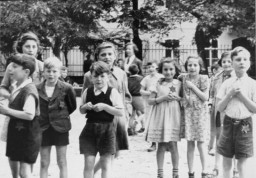
This photo was taken during the journey of Bluma (Kleinhandler) and Zygmunt Godzinski from Poland to Argentina. Casablanca, Morocco, 1946.
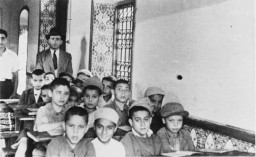
Jewish children wearing the compulsory yellow badge. In September 1943, they were deported to Auschwitz.Antwerp, Belgium, 1943.
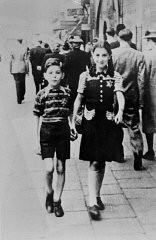
Group of Jewish children who were sheltered in the children's home Maison des Roches, which was directed by Daniel Trocme (back, center, with glasses). Le Chambon-sur-Lignon, France, between 1941 and 1943.
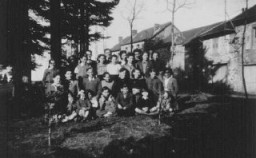
Jewish children sheltered by the Protestant population of the village of Le Chambon-sur-Lignon. France, 1941–44.
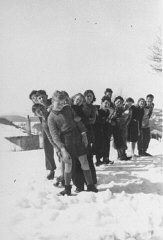
Jewish children sheltered by the Protestant population of the village of Le Chambon-sur-Lignon. France, 1941.

Employees of the Jewish council in the Kovno ghetto assemble during roll call, which was taken on a daily basis. Kovno, Lithuania, 1941–43.
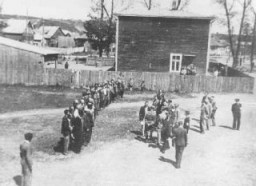
We would like to thank Crown Family Philanthropies, Abe and Ida Cooper Foundation, the Claims Conference, EVZ, and BMF for supporting the ongoing work to create content and resources for the Holocaust Encyclopedia. View the list of donor acknowledgement.